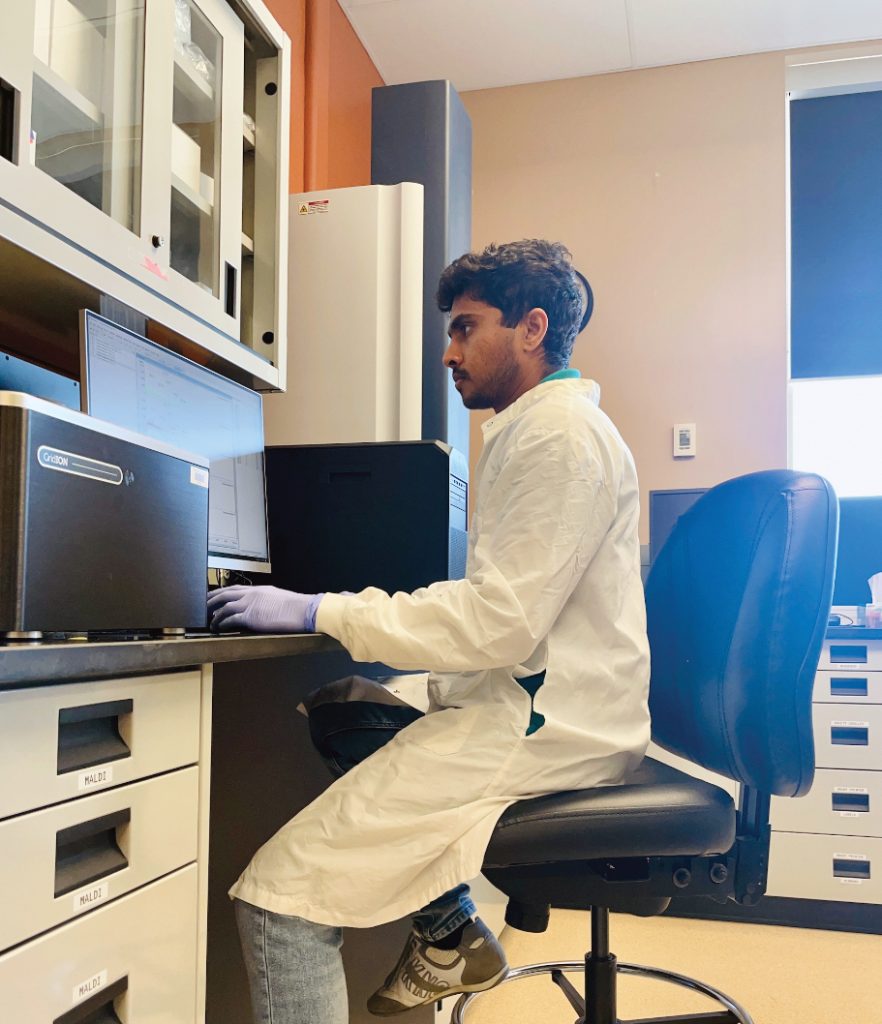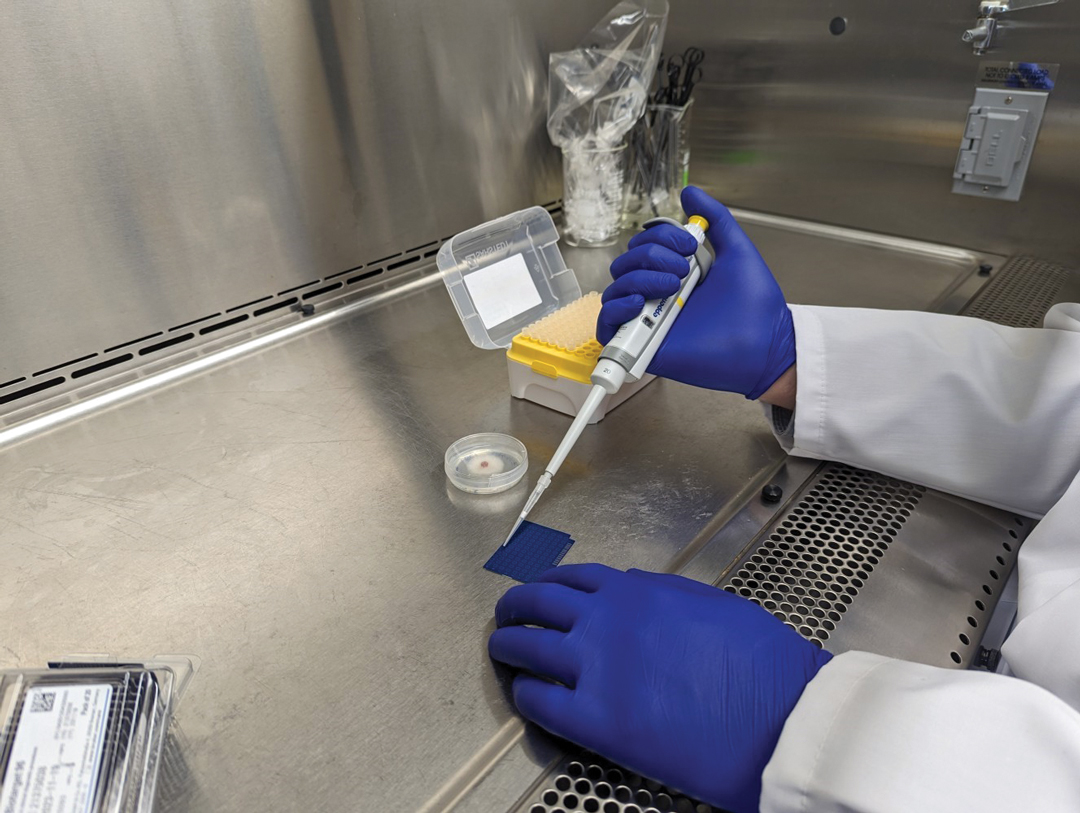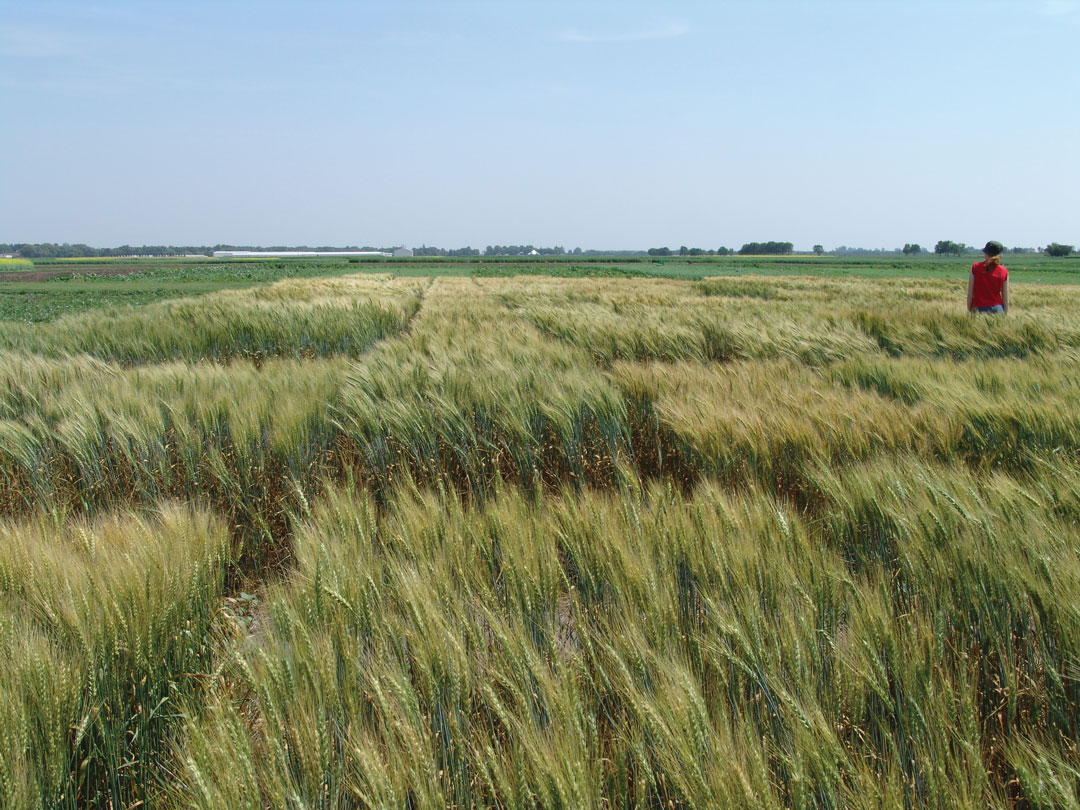FUNGI LASER BATTLE
BY TREVOR BACQUE • PHOTO COURTESY OF THE CANADIAN GRAIN COMMISSION
Scientists continue to do their part in the fight against nasty cereal diseases. A Canadian Grain Commission (CGC) team has completed an innovative three-year study that will allow for faster recognition and identification of rust and Fusarium types.
Funded by the Western Grains Research Foundation, SaskWheat and the Manitoba Crop Alliance, the study makes use of a tool long used in the medical world to detect microbial infection. Fungi samples from infected plants are tested using a system dubbed MALDI-TOF MS. This mouthful of an acronym stands for matrix-assisted laser desorption/ionization time of flight mass spectrometry. In what sounds like a concept for a video game, a laser is fired at a microbe sample. This causes it to blow apart and ionize. The electrically charged particles this produces are identified by a sensor as being a species of rust or Fusarium. Each such sample carries a unique disease profile. These are collected in a database that will serve as a cross-reference for future samples submitted to the CGC.
Sean Walkowiak is program manager for microbiology and grain genomics at the CGC. He said the research is very promising and involved years of work by graduate student Shimosh Kurera. “We were able to create databases of fingerprints for these different fungi so that when we find an unknown fungus and we want to make an ID, we’re not looking to old school methods,” he said. “[This method] complements all these other tools that are available to us, like microscopy and DNA tests.”

It is also demonstrably quicker than the conventional method of visually identifying a sample on a microscope slide. If a visual identification can’t be made, the sample must be sent off for further analysis. Rust, for instance, is notoriously hard to identify and its type can often only be determined by its behaviour on a plant. Through MALDI-TOF MS, 96 samples can be analyzed simultaneously in just a few minutes.
“You get sort of squirrelly eyed after looking at too many of these things through the microscope,” said Walkowiak. “It’s not the easiest high-throughput thing to do, whereas with the MALDI it’s much, much faster, and the cost is really, really cheap, too.” It also produces more usable data than does mere visual assessment. “This gathers information beyond how the fungi looks, but what its biochemistry is—its underlying molecules,” he said. This more detailed information can identify possible emerging fungi strains.
Walkowiak is hopeful the technology will become widely used in agricultural labs across the country. To this end, he intends to make the project database publicly available. “If the tools aren’t established, companies aren’t going to be investing in an instrument that they can’t really use for doing IDs,” he said. “This is about building the tools and methods to enable industry and others to be able to do the testing.”
A final report that will outline the research group’s findings will be publicly available within the next year. Project scientists will continue to work to build their database of fungi fingerprints to better and more quickly identify submitted samples.







Comments